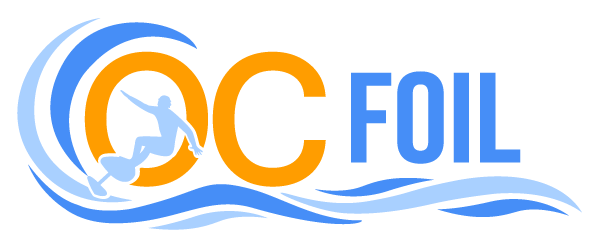Which Fliteboard Is Right for You? A Deep Dive Into Models, Materials & Propulsion
So you're ready to buy a Fliteboard—but which one is the right fit? With a variety of models, propulsion systems, and materials, choosing the best configuration can feel like navigating uncharted waters. Whether you’re a total beginner or a seasoned rider looking for high-performance thrills, this in-depth guide will walk you through everything you need to know to make an informed decision when purchasing your ideal Fliteboard setup.
This comprehensive Fliteboard buying guide covers all available models, propulsion options, and board materials—so you can confidently select the perfect electric hydrofoil that fits your riding style, skill level, and lifestyle.
Fliteboard Models: Finding the Right Ride
Fliteboard currently offers four main models: the AIR, Fliteboard (Standard), PRO, and ULTRA/ULTRA L2. Each eFoil board is designed for a specific rider profile, skill level, and water riding style.
1. Fliteboard AIR – Best for Beginners and Stability
Volume: ~150 liters
Material: Drop-stitch inflatable with a rigid internal plate
Target Rider: Beginners, families, heavier riders, schools, yachts
Why It Stands Out:
Most stable and forgiving Fliteboard
Soft surface makes falls safer
Easiest electric hydrofoil board to learn on
Drawbacks:
Less responsive than rigid eFoil boards
Slightly more drag in the water
Ideal Use: Lessons, rentals, and riders over 220 lbs who want max stability on water
2. Fliteboard Standard – Best All-Around eFoil Board
Volume: ~100 liters
Material: Carbon fiber or fiberglass composite
Target Rider: All-around riders, families, light-to-average weight riders
Why It Stands Out:
Excellent balance of stability and maneuverability
Great for both beginners and intermediate riders
Drawbacks:
Not as agile as the PRO model
Ideal Use: Versatile eFoil option; great for shared use or those wanting long-term flexibility
3. Fliteboard PRO – Best for Experienced Riders Seeking Agility
Volume: ~67 liters
Material: Carbon fiber
Target Rider: Intermediate to advanced riders, under 200 lbs
Why It Stands Out:
Compact, agile, and fast
Allows tighter carving and quicker takeoffs
Drawbacks:
Less stable, not beginner-friendly
Ideal Use: For performance-focused riders who want a more dynamic ride
4. Fliteboard ULTRA / ULTRA L2 – Best for Experts and Tricks
Volume: ~54 liters
Material: Carbon fiber only
Target Rider: Advanced to expert riders
Why It Stands Out:
Lightest and smallest board in the Fliteboard lineup
Designed for full performance—tricks, wave riding, and aerials
Optional foot straps and mast positions for surf-style eFoiling
Drawbacks:
Requires excellent balance and experience
No forgiveness on takeoffs and landings
Ideal Use: Riders seeking maximum agility and freestyle capabilities on an eFoil
Fliteboard Propulsion Options: Jet vs Propeller vs Surf-Focused
1. Flite Jet 2.0 – Safest and Quietest Fliteboard Propulsion
Type: Ducted jet propulsion (fully enclosed)
Pros:
Ultra-safe (no exposed blades)
Smooth, quiet ride
Minimal drag in water
Cons:
Slightly less torque than propeller
Slower planing for heavier riders
Best For: First-time riders, schools, or those prioritizing safety and smoothness
2. Propeller + Guard – Most Powerful and Popular Option
Type: Traditional open prop with safety guard
Pros:
Strong low-end thrust
Faster takeoffs and better planing ability
Cons:
More noise than jet propulsion
Slightly higher drag due to guard
Best For: Riders over 200 lbs or anyone needing more torque for quick lift
3. True Glide Prop – Best for Wave Riding and Surf
Type: Free-spinning propeller when throttle is off
Pros:
Natural coasting and wave riding
Ideal for surfing or catching ocean swells
Cons:
Not beginner-friendly
Only compatible with PRO/ULTRA models
Best For: Experienced riders looking to surf waves using an electric foil
4. Folding Prop – Performance Propulsion for Surfing
Type: Folds back to reduce drag when coasting
Pros:
Seamless transition from powered to unpowered riding
Less drag than True Glide
Cons:
Less durable under frequent impact
Best For: Advanced riders chasing long swells and open-ocean sessions
Board Materials: Choosing Between Carbon, Fiberglass, or AIR
Carbon Fiber – Premium Performance Material
Performance: Stiff and ultra-responsive
Weight: Lightest option available
Durability: Strong but can ding if mishandled
Aesthetic: Sleek, premium finish
Best For: Performance-focused riders wanting top-tier response and feel
Fiberglass Composite – Durable, Mid-Tier Material
Performance: Slightly more flex than carbon
Weight: Heavier than carbon, lighter than inflatable
Durability: More impact-resistant than carbon
Aesthetic: Smooth finish, slightly textured
Best For: Riders seeking balance of cost, performance, and durability
Drop-Stitch Inflatable (AIR) – Safe and Convenient
Performance: Flexible and forgiving
Weight: Heaviest option
Durability: Very impact-resistant, soft for falls
Aesthetic: Utility-focused design
Best For: Beginners, rentals, or riders prioritizing comfort and portability
Final Thoughts: Buying the Right Fliteboard
Choosing the right Fliteboard means aligning with your riding goals, experience level, and typical water conditions. Whether you're exploring lakes, riding open ocean swells, or carving with friends, the best Fliteboard is the one that maximizes your time on the water.
At OC Foil, we help Southern California riders find their perfect electric hydrofoil setup. We offer Fliteboard demos, private lessons, and personalized consultations. Ready to ride? Reach out to us today and we’ll match you with the best Fliteboard for your adventure.
www.ocfoil.com/shop/fliteboard

